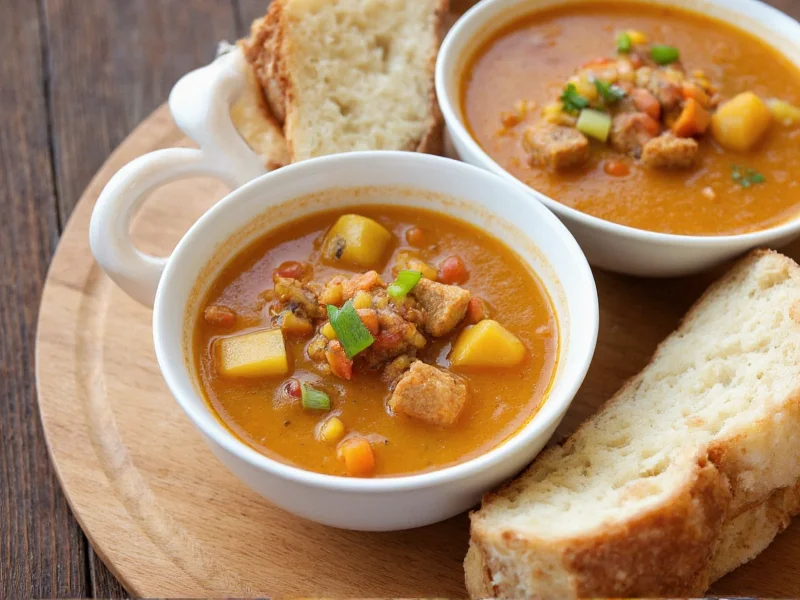The Global Heritage of Chilled Culinary Creations
Cold soups represent one of the oldest culinary traditions worldwide, with historical roots stretching back centuries. Unlike their hot counterparts that require cooking equipment, cold soups emerged from practical necessity in warm climates where preserving fresh produce was challenging. The Spanish developed gazpacho in Andalusia as a way for farm workers to carry nourishing meals without heavy cooking gear. Similarly, Eastern European cultures created beet-based borscht served cold during summer months. These traditional preparations weren't just practical—they preserved maximum nutritional value since heat-sensitive vitamins like vitamin C remain intact when ingredients aren't cooked.
Essential Cold Soup Varieties Across Cultures
Exploring international cold soup traditions reveals remarkable diversity in ingredients and preparation methods. Each culture has developed unique approaches to creating satisfying chilled dishes that reflect local agricultural abundance and historical circumstances.
| Soup Name | Origin | Key Ingredients | Distinctive Characteristics |
|---|---|---|---|
| Gazpacho | Spain | Tomatoes, cucumber, bell pepper, garlic, olive oil | Chunky texture, vibrant red color, served with garnishes |
| Vichyssoise | France/America | Potatoes, leeks, cream, chicken stock | Silky smooth texture, pale color, elegant presentation |
| Ajoblanco | Spain | Almonds, garlic, bread, olive oil | White color, nutty flavor, often served with grapes |
| Tarator | Bulgaria | Cucumber, yogurt, walnuts, dill | Creamy texture, refreshing taste, probiotic benefits |
| Salmorejo | Spain | Tomatoes, bread, garlic, olive oil | Thicker than gazpacho, richer texture, often topped with ham |
Nutritional Advantages of Uncooked Soup Preparations
When preparing healthy cold soup recipes, the absence of cooking provides significant nutritional advantages. Heat-sensitive nutrients like vitamin C, certain B vitamins, and antioxidant compounds remain fully preserved in uncooked preparations. This makes traditional Spanish gazpacho recipe variations particularly valuable during summer when fresh produce abounds. The raw preparation method also maintains natural enzyme activity in ingredients, potentially aiding digestion. Additionally, cold soups typically require less added fat than cooked versions since emulsification happens through blending rather than cooking techniques.
Research shows that cold soup preparation preserves up to 30% more vitamin C compared to cooked soups, making them excellent immune system supporters. The high water content in ingredients like cucumbers and tomatoes provides natural hydration—particularly valuable during warm weather when fluid needs increase. For those seeking refreshing cold soup ideas with maximum nutritional impact, focusing on deeply colored vegetables ensures higher concentrations of beneficial phytonutrients.
Mastering Cold Soup Preparation Techniques
Creating exceptional cold soups requires understanding specific preparation techniques that differ from hot soup making. The most successful healthy cold soup recipes balance texture, flavor development, and proper chilling. Unlike hot soups where flavors meld through cooking, cold soups develop complexity through proper ingredient selection and resting time.
Professional chefs emphasize several key techniques for perfect cold soups. First, ingredient quality is paramount—since nothing gets cooked, flaws in produce become magnified. Second, proper salting happens in stages: initial seasoning of chopped ingredients, then adjustment after blending, and final tweaks before serving. Third, chilling time matters significantly; most cold soups benefit from at least four hours of refrigeration to allow flavors to marry properly. Fourth, texture control separates good cold soups from exceptional ones—some benefit from slight chunkiness while others require ultra-smooth blending.
Food Safety Guidelines for Chilled Preparations
Understanding proper food safety guidelines for cold soups is essential for enjoyable and safe consumption. Unlike hot soups that kill bacteria through cooking, cold preparations require careful handling to prevent foodborne illness. The two-hour rule applies strictly: cold soups shouldn't remain at room temperature for more than two hours (one hour when ambient temperature exceeds 90°F/32°C).
Proper storage extends cold soup freshness while maintaining quality. Store in airtight containers at or below 40°F (4°C), preferably in the main refrigerator compartment rather than the door where temperatures fluctuate. Most vegetable-based cold soups remain fresh for 3-4 days, while dairy-based varieties like vichyssoise last 2-3 days. Before serving, check for signs of spoilage including unpleasant odors, separation that doesn't reincorporate with stirring, or visible mold. When in doubt, discard the soup—better safe than sorry when enjoying refreshing cold soup ideas.
Perfect Pairings for Chilled Culinary Creations
Serving cold soups with complementary accompaniments elevates the dining experience from simple to sophisticated. The right pairings balance textures and flavors while creating a complete meal. Crusty bread remains the classic companion, but specific varieties work better with different cold soups. For tomato-based gazpacho, a slice of rustic country bread provides ideal texture contrast. Creamy vichyssoise pairs beautifully with buttery brioche or delicate crostini.
Consider these perfect pairings for your cold soup preparations:
- Gazpacho: Garlic-rubbed toast points (pa amb tomàquet) with extra virgin olive oil
- Vichyssoise: Crispy bacon bits and chives for contrast
- Ajoblanco: Seedless green grapes for sweet contrast
- Tarator: Grilled vegetables or light fish dishes
- Salmorejo: Serrano ham and hard-boiled egg garnishes
Beverage pairings also enhance the experience. Light white wines like Albariño complement tomato-based soups, while crisp rosés work well with creamier varieties. For non-alcoholic options, sparkling water with citrus slices or herbal iced teas provide refreshing accompaniments that won't overwhelm delicate flavors.
Adapting Cold Soups for Year-Round Enjoyment
While traditionally associated with summer, cold soups can be adapted for enjoyment throughout the year with thoughtful ingredient substitutions. During cooler months, incorporate heartier vegetables like roasted beets or sweet potatoes that provide natural sweetness without requiring cooking. Adding toasted nuts or seeds introduces warmth through texture rather than temperature. For autumn variations, consider apple-based soups with celery root and fresh herbs.
Seasonal adaptation maintains the core principles of cold soup preparation while addressing changing nutritional needs. Winter versions might include more root vegetables rich in complex carbohydrates, while spring iterations highlight fresh greens and edible flowers. The key is maintaining the refreshing quality that defines cold soups while adjusting ingredient profiles to match seasonal availability and dietary requirements. This approach ensures your collection of easy cold soup recipes remains relevant and exciting throughout the entire year.











 浙公网安备
33010002000092号
浙公网安备
33010002000092号 浙B2-20120091-4
浙B2-20120091-4